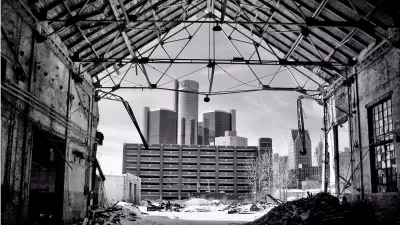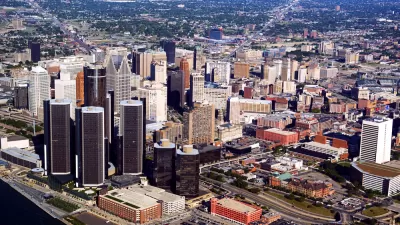Like its beloved baseball team, downtown Detroit is on an upswing, writes Bill Morris. The area's rise as a desirable neighborhood can be attributed in no small part to new sports facilities located in close proximity.
For the hundreds of thousands who fled the city of Detroit for its suburbs in the later half of the 20th century, a trip downtown would likely be for one of two things - to go to work or attend a sporting event. Now, says Morris, "[t]he reverse exodus has become so pronounced that downtown Detroit can now
be fairly accused of imitating such desirable New York addresses as
Chelsea or TriBeCa. Yes, it's gotten so bad - or good - that it's now
nearly impossible to find a vacant apartment to rent in downtown
Detroit."
An army of (mostly) young people, like Mandy Davenport, are flocking to downtown for the benefits of city living. "'The only thing I used to know about downtown Detroit was
games,' says Davenport, 30, who moved from tiny Williamston, near
Lansing, about six weeks ago to take a job as office manager in the
Broderick Tower, an elegant 34-story tower on Woodward Avenue that is
being converted into luxury apartments. 'My friends in California told
me I was stupid to move here, I'm going to get killed. Frankly, I
thought it was going to be scarier. There's a lot to do - bars,
restaurants, concerts, games, the Eastern Market. It's a lot of young
people, people moving in from the suburbs. A lot of people want to walk
to work.'"
For Morris, the most valuable players in the area's comeback are the city's sports franchises, who built new facilities in the city, and business leaders, who moved their headquarters downtown.
FULL STORY: Finally, a Downtown’s Upswing

Maui's Vacation Rental Debate Turns Ugly
Verbal attacks, misinformation campaigns and fistfights plague a high-stakes debate to convert thousands of vacation rentals into long-term housing.

Planetizen Federal Action Tracker
A weekly monitor of how Trump’s orders and actions are impacting planners and planning in America.

San Francisco Suspends Traffic Calming Amidst Record Deaths
Citing “a challenging fiscal landscape,” the city will cease the program on the heels of 42 traffic deaths, including 24 pedestrians.

Defunct Pittsburgh Power Plant to Become Residential Tower
A decommissioned steam heat plant will be redeveloped into almost 100 affordable housing units.

Trump Prompts Restructuring of Transportation Research Board in “Unprecedented Overreach”
The TRB has eliminated more than half of its committees including those focused on climate, equity, and cities.

Amtrak Rolls Out New Orleans to Alabama “Mardi Gras” Train
The new service will operate morning and evening departures between Mobile and New Orleans.
Urban Design for Planners 1: Software Tools
This six-course series explores essential urban design concepts using open source software and equips planners with the tools they need to participate fully in the urban design process.
Planning for Universal Design
Learn the tools for implementing Universal Design in planning regulations.
Heyer Gruel & Associates PA
JM Goldson LLC
Custer County Colorado
City of Camden Redevelopment Agency
City of Astoria
Transportation Research & Education Center (TREC) at Portland State University
Jefferson Parish Government
Camden Redevelopment Agency
City of Claremont




























